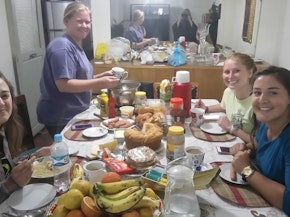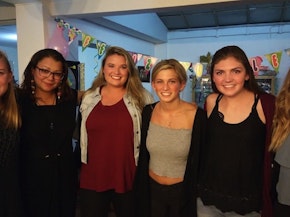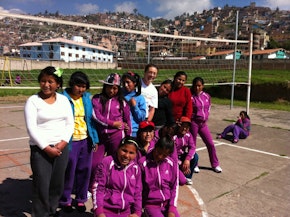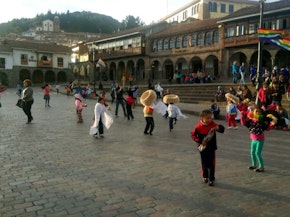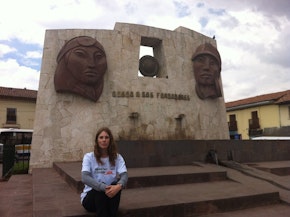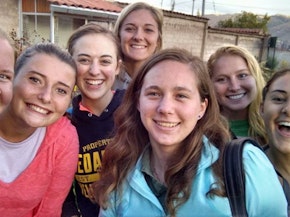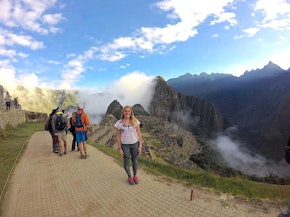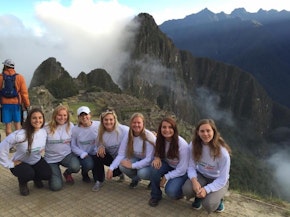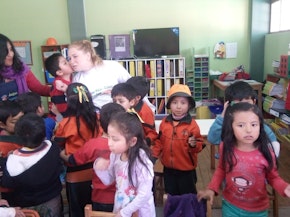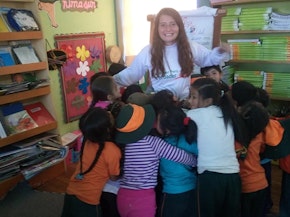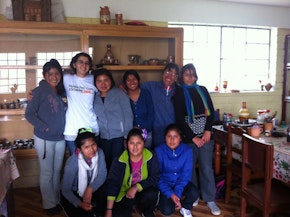When it comes to giving back there are a number of ways that you can do it, but far too often we just don’t think about it. But what if you could make giving back not only easier, but a whole lot of fun at the same time? With missionary trips in Mexico you’re going to have no problem doing just that and you’re definitely going to have no problem making a big difference in the lives of the people that you interact with. You just need to decide how you’re going to do it.

The child care and street children programs are designed to give children in the rural communities of Mexico access to the education that they need. You’ll be able to work with them to develop their English skills, encourage arts and just have fun with them. But you’re also going to be able to work with children who don’t have families or homes. You’ll be able to give these children the same types of care and attention that their peers would get, even though they wouldn’t otherwise have access to it.
The sea turtle conservation program is designed to give you the opportunity to really give back to these amazing creatures who are being dramatically impacted throughout the country. Sea turtles are having their homes destroyed or their homes are becoming impacted by the ways of the world as well. With this program you’ll be able to help the sea turtles in amazing new ways and you’re going to have no problem feeling like you’re making a difference because you’ll be able to see exactly where you’re making that difference. You’ll be able to help with cleaning up beaches and helping to bring sea turtles back to their prosperity levels.
Finally, the program for environmental impact and conservation is designed to help improve the environment throughout the region. You will also be working with cleaning up the beaches but you’ll have more to this process than that. You’re also going to be involved in reforestation and planting native trees to help in areas that have seen clear cutting or too much deforestation in other ways. You’ll also be able to work with the people in the region to help educate them on just what needs to be done to improve their country and their region overall.
No matter which program you decide to get involved with, your missionary trips in Mexico are definitely going to be something you’re proud of when you’re done. You’ll be more than happy with the ways that you’ve been able to give back to the people within the community and you’re going to love the fact that these skills and opportunities will last a lifetime. You’re never going to forget everything that you’ve been able to do when you are volunteering in Mexico. And you’re going to want to travel again to Mexico or maybe even another country. After all, there’s nothing quite like the experience of giving back.
Language immersion volunteer program includes 15 hours of weekly Spanish lessons, with 5 afternoons of classroom instruction. Lessons will focus on pronunciation, grammar and conversation. The language immersion volunteer program can be combined with any of our volunteer programs. Volunteer in Mexico Meaningful travel begins when you engage with people of the world. Our language immersion volunteer programs in Oaxaca allows you to learn Spanish, grow as an individual and discover a new culture. What better way to learn a language than full immersion: lessons with a native Spanish speaker, home-stay with a local Costa Rican family and participating in a locally-run service project and community activities. Return from your ABV travels with a greater appreciation of your surroundings. Learn to be a global citizen and gain a broader view of the world. Access to education in Art and English is a primary issue in rural Oaxacan schools. Combined with financial vulnerability, most families struggle at providing their children a quality education. By volunteering as an English, you encourage the development of language and artistic skills of local children, giving them new opportunities to be creative and successful. The preschools are located in the rural area of San Pablo Etla, a community northeast of Oaxaca City. The volunteer schedule is Monday through Friday, 9 A.M. to 12 P.M., excluding national holidays noted on the school calendar. Your volunteer work will change the lives of sixty children from ages 3 to 5. Classroom expectations for teachers are to prepare a daily lesson plan covering conversational skills, essential reading and writing, listening skills, and organize academic-related activities. Volunteers will work alongside local teachers and participate in the institution's general operations. By immersing yourself in Oaxacan culture, volunteers will gain knowledge of local customs and culture, furthermore, refining their Spanish skills. This program works to improve the quality of life of children and families living in the streets of Oaxaca. They achieve this by providing mental-health and parental counseling, educational services, communal dining, adult and youth educational programs, and the basic knowledge of their rights as a human. The schedule is Monday through Friday, from 9 A.M. to 12 P.M., excluding national holidays. It benefits more than thirty-three children and encourages its volunteers to participate in activities that raise awareness and prevent child labor, struggling youths living in streets, the horrific situations they face in daily life. While working here, volunteers will be able to practice their skills by helping within different tasks: organizing cultural and sporting events, assisting with office work, providing child care, teaching Art and English lessons, help plan festivals and holiday parties, or even get their hands dirty by helping with the must needed renovations to the building. By volunteering with impoverished children living in the street, you will change the lives of some of the most vulnerable populations of Mexico and provide them an opportunity to learn and be creative for the first time in their young lives We protect the nesting female sea turtles that arrive to nest on our beaches, as well as their nests and hatchlings that emerge from the sand and make their way into the ocean. Our conservation program includes beach patrols day and night as well as moving nests from risk zones to safe areas and releasing hatchlings into the ocean. There are many ways to protect the sea turtles and we do what we can to save them from extinction and protect their habitat. We also protect other species such as the blue crab, crocodiles and other wildlife in the region as well as the ecosystems in which they live such as the beach, the mangroves and the ocean. Clothing: Shirts with long sleeves and short sleeves (Dri-Fit), Pants, 2 shirts and 2 formal pants for meetings, Shorts, Clothes to get dirty, Waterproof / windbreaker, Comfortable footwear with firm sole, like boots, Long socks, Flip flops, Swimwear, Cap or hat, Sunglasses, Thermos for water, flashlight (that has yellow and red light), Waist bag, Plastic watch, Repellent, Sunscreen, Bath towel, Money for personal expenses, Personal hygiene items, Personal first aid kit. Note: Airport Veracruz (VRZ) tranfers included US$270 both ways, 2.2 hours trips. We are dedicated in doing intelligent reforestation, using sustainable techniques and planting native or endemic trees. We organize reforestation campaigns together with our communities, schools, universities and different environmental groups. Reforestation is very important to our organization, not only as a way of fighting climate change but planting native trees that bear fruit also helps save sea turtles. How? Once the sea turtle predators such as birds have alternative food, such as mango or avocado, they will no longer need to eat as many sea turtle eggs. Clean Beach: We have been organizing beach clean-ups for many years both together with the local communities and visiting groups to protect the nesting habitat of the sea turtles. We are currently working towards the certification of our beach as a Blue Flag beach, an international eco-label. The Blue Flag works towards sustainable development of beaches and marinas through strict criteria dealing with Water Quality, Environmental Education and Information, Environmental Management, and Safety and Other Services. One of the most important methods to protect the environment is through environmental education. Educating our future generations, we also ensure the protection of the future generations of sea turtles and the planet as a whole. We work together with various educational institutions as well as with the local communities realizing more than 200 conferences per year as well as organizing environmental events especially to raise awareness about the critical situation of the sea turtles but also addressing many other environmental issues. Clothing: Shirts with long sleeves and short sleeves (Dri-Fit), Pants, 2 shirts and 2 formal pants for meetings, Shorts, Clothes to get dirty, Waterproof / windbreaker, Comfortable footwear with firm sole, like boots, Long socks, Flip flops, Swimwear, Cap or hat, Sunglasses, Thermos for water,flashlight (that has yellow and red light), Waist bag, Plastic watch, Repellent, Sunscreen, Bath towel, Money for personal expenses, Personal hygiene items, Personal first aid kit. Note: Airport Veracruz (VRZ) tranfers included US$270 both ways, 2.2 hours trips. The beautiful city of Mérida is located in the northwestern part of the Yucatán Peninsula in southeastern Mexico. It was founded in 1542 by Francisco de Montejo and built on the Maya city of T’ho which had been a center of Mayan cultura and activity for centuries. Nowadays Mérida – also know as the “White City” – it’s the most tranquil and safest cities in Mexico with it's own microhabitat. Its privileged geographical location, its history, the rich cultura life and authentic Mexican atmosphere make Mérida the ideal place for combining Spanish study and volunteer work. With 830 000 inhabitants Mérida is a fascinating, and cosmopolitan town which has a lot to offer. Mérida’s historical downtown area mainly consists of beautiful colonial buildings which – especially around the main plaza – house museums, art galleries, restaurants, cafes, hotels, theatres and small shops. It is a vibrant cultural place where free cultural events are held daily. The modern nothern part of the city in contrast offers a comprehensive range of fancy shopping malls, top quality hotels, internacitional restaurants, universities and leisure facilities. Because Mérida is surrounded by so many spectacular attractions (both natural and cultural), it is the perfect starting point to explore the treasures of Yucatán. From the beautiful beaches of the relaxed town of Progreso to the world famous Mayan ruins Uxmal, Mayapan and Chichén Itzá, the options close to Mérida are numerous. Oaxaca is a city visited by travelers from all over the world, a place full of traditions and natural sites that offer tourists a handful of cultural and recreative activities. Oaxaca has a colonial architecture shown by it’s large amount of novohispanic churches and convents and is considered to be a food hub that brings together the flavors of it’s 8 different regions. The richness of it’s popular art can be recognized on it’s textiles, ceramics and all kinds of handcrafted products which are still linked to the Mexican prehispanic and indigenous culture. There are at least 16 native languages in addition to a lot of arqueological sites, such as Monte Albán, Mitla and Yagul. Oaxaca is a city sorrunded by mountains and rainforests that offers the visitors unique places, such as Hierve el Agua (a set of natural rock formations that resemble waterfalls) or el Tule’s tree (2,000 years old). Therefore, Oaxaca is a mix between art, nature and culture, which is shown on it’s music, paintings, literature and photography, artistic disciplines that are recognized not only in Mexico, but all over the world. Welcome to Mexico 🇲🇽 (Bienvenido a Mexico!). Our Names are Telma, Jesus, Lazaro and Ricardo and we are your ABV coordinators while you are staying in Mexico. Our country has several big cities, DF, Guadalajara. You will be working in Oaxaca, Merida or Veracruz. We will be ready for support 24/7 in case you need to contact us urgently. We will introduce you to your volunteer location and staff. You are most welcome to seek our assistance and don’t hesitate to ask me questions while in country. What is the best time of year to go to Oaxaca de Juárez in Mexico Oaxaca shares the same summer as the United States and Europe, which includes the months of June, July and August. However, these months are also the wettest months in Oaxaca. Because of it's proximity to the equator the temperatures remain fairly constant throughout the entire year. While Oaxaca does not have a traditional four-season year, it does have a rainy season and a dry season. The dry season lasts from October to April and you will see little rainfall. The wet season lasts from April to October with heavy rainfall. Here are some average weather facts we collected from our historical climate data: What is the best time of year to go to Veracruz in Mexico During the month of January, February and December you are most likely to experience good weather with pleasant average temperatures that fall between 20 degrees Celsius (68°F) and 25 degrees Celsius (77°F). The hottest season / summer is in April, May, June, July, August, September and October. A lot of rain (rainy season) falls in the month: June, July, August and September. I loved when the kids would know my name and get excited to see. It meant to me that I was making them happy and that alone made me incredibly happy to be there. During the weekdays, I would get up at 8 am and go to volunteer. I would come home for lunch at my host mom’s. This experience as a whole has surpassed my expectations as a volunteer. I am taking way more out of this program that I feel I even put in. The growth that you see yourself is something only time can prove. ABV was the more credible program I found online after many weeks of research. I think this was a great experience/opportunity for me. I worked at the dental hospital and it was great to see how different they treat their patients and the different accommodations they have to make. Living at Maria Elena´s was very nice. Since A Broader View Volunteers is a 501c(3) charitable organization, You can fundraise (optional) for the expenses of the trip after you get confirmed in our programs. Prices are per person and in US dollars (US$). Note: Airport Veracruz (VRZ) tranfers included US$270 both ways, 2.2 hours trips. Extra costs: Flights to Mexico. Entry Visa (if applicable). Departure taxes. Vaccinations. Local Transportation. Travel & Health Insurance (approx. us$53). Laundry and Internet (us$5 and us$10). Once in country our local coordinator can help you find the most reliable and safe tour agencies for weekend trips, you can pay in cash or in most locations with a credit card. These tours are not part of the ABV fees. Veracruz Tours Oaxaca Tours Merida Tours Arguably Oaxaca City’s biggest and most well-known celebration is the annual Guelaguetza festival, a spectacle of culture, dance and tradition. Every July, dancers from all corners of the sprawling southern state, or to be more precise, from the seven regions of Oaxaca, gather in the capital’s hilltop amphitheatre to perform popular dances while dressed in elaborate and traditional Oaxacan outfits. Tickets typically sell out a while in advance. Night of the Radishes, Oaxaca Oaxaca’s Night of the Radishes, a much-hyped and much-beloved Christmas tradition centring around radish carving competitions (yes, really) is just the tip of the iceberg when it comes to quirky Mexican festivals and celebrations. You also have Tlaxcala’s Night Nobody Sleeps during which coloured sawdust carpets the streets to mark the Assumption of the Virgin Mary; Zacatecas’ La Morisma which involves full blown re-enactments of Christians vs. Moors battles; San Miguel de Allende even gets in on the act with the Fiesta de los Locos (Crazy People’s Party). Many Mexican cities offer weekend concerts in parks and plazas, but Mérida surpasses them all by offering performances every day of the week. Unless otherwise indicated, admission is free. Sunday -- From 9am to 9pm, the centro stages a fair called Mérida en Domingo(Mérida on Sunday). The plaza and a section of Calle 60 extending to Parque Santa Lucía close to traffic. Parents stroll with their children, taking in the food and drink booths, the lively little flea market and used-book fair, children's art classes, and educational booths. At 11am, musicians play everything from jazz to classical and folk music in front of the Palacio del Gobierno, while the police orchestra performs Yucatecan tunes in Santa Lucía park. At 11:30am, you'll find bawdy comedy acts at Parque Hidalgo, on Calle 60 at Calle 59. After a midafternoon lull, the plaza fills up again as people walk around and visit with friends. Around 7pm in front of the Ayuntamiento, a large band starts playing mambos, rumbas, and cha-chas with great enthusiasm; you may see 1,000 people dancing in the street. Afterward, folk ballet dancers reenact a typical Yucatecan wedding inside. Sunday -- From 9am to 9pm, the centro stages a fair called Mérida en Domingo(Mérida on Sunday). The plaza and a section of Calle 60 extending to Parque Santa Lucía close to traffic. Parents stroll with their children, taking in the food and drink booths, the lively little flea market and used-book fair, children's art classes, and educational booths. At 11am, musicians play everything from jazz to classical and folk music in front of the Palacio del Gobierno, while the police orchestra performs Yucatecan tunes in Santa Lucía park. At 11:30am, you'll find bawdy comedy acts at Parque Hidalgo, on Calle 60 at Calle 59. After a midafternoon lull, the plaza fills up again as people walk around and visit with friends. Around 7pm in front of the Ayuntamiento, a large band starts playing mambos, rumbas, and cha-chas with great enthusiasm; you may see 1,000 people dancing in the street. Afterward, folk ballet dancers reenact a typical Yucatecan wedding inside. Thursday -- At 9pm in Parque Santa Lucía, the Serenata Yucateca presents regional music, dance, and spoken-word performances. Friday -- At 9pm in the courtyard of the University of Yucatán, Calle 60 at Calle 57, the University of Yucatán Ballet Folklórico performs typical Yucatecan dances. Saturday -- At 8pm in the park at Paseo de Montejo and Calle 47, Noche Mexicana features traditional Mexican music and dance performances with craft booths and food stands selling great antojitos (finger foods), drinks, and ice cream. At 9pm, Calle 60 closes between Plaza Grande and Calle 53 for En El Corazón de Mérida, a festival featuring several live bands joined by stilt walkers, mariachis, and crafts and food stands. Volunteers are usually provided breakfast, lunch at a local restaurant during the week and weekends (read the website for detail description of the meals or ask our staff online). Breakfast typically consists of toast, fruit, eggs, cereal accompanied with milk, tea or coffee. We recommend budgeting between US$5 and US$6 per day to purchase dinner. If you have specific dietary requirements, our local team can customize to you but be flexible as well. Most of our programs run year round, you can start any volunteer/internship program on any day. When you apply you will lets know your start and end dates. Our programs run year round and have volunteers arriving almost every day from many different countries. Since our programs sometimes depend on the local holiday calendar, there are brief occasions when normal programs work is suspended. For example, schools/daycares often close for long winter/summer vacations. During these times, we arrange for alternative work programs that are similar in substance to our ongoing programs, but address the short-term, direct needs of the local communities. If you would like to arrange your start and end dates around the local holidays, please call us at 1.866.423.3258 or email us at [email protected]. A Broader View Volunteers work tirelessly year round to support our volunteers, and also to serve the local communities where ABV projects are based. As a tax-exempt 501 c(3) organization A Broader View receive 100% of our funding from volunteer contributions. Through your program fee contribution our non-profit charity organization can operate beneficial humanitarian aid programs which are successful and continuous supported year round. Local, professional full-time coordinators, placement logistics, airport pick up and departure transportation, arrival orientation, food & local accommodations, are a major part of providing a safe, meaningful volunteer experience. When you join A Broader View, you will receive pre-trip visa and vaccination support, assistance with flights, fundraising planning, through our interactive online volunteer portal. Our local partners not only benefit from volunteers valuable contributions at the project, they benefit financially with year-round monetary support from A Broader View. In the last decade A Broader View has donated over 4.5 million dollars in international aid. By joining A Broader View you are not only helping to make a difference during your own trip, your impact will last even after you go home.Overview
Volunteer in Mexico Oaxaca Center
Language & Cultural Immersion
Child Care

Street Children Center

Volunteer in Mexico Veracruz
Sea Turtle Conservation

Conservation / Environmental Reforestation

Environmental Education
Country Info
Country Details
Merida Introduction

Oaxaca Introduction

Coordinator



Weather
Reviews & Multimedia
Reviews
Photos Gallery
Videos
Prices for Mexico
Program Fees
Length of program Program Fee $USD 1 week $895 2 weeks $1,030 3 weeks $1,195 4 weeks $1,360 5 weeks $1,575 6 weeks $1,690 7 weeks $1,855 8 weeks $2,030 Length of program Program Fee $USD 1 week $900 2 weeks $1,220 3 weeks $1,540 4 weeks $1,820 5 weeks $1,890 6 weeks $1,970 7 weeks $2,070 8 weeks $2,170
Country / weeks 1 2 3 4 Oaxaca / Merida - Language Immersion $1,025.00 $1,190.00 $1,355.00 $1,520.00 Inclusions
Extras
Tour and weekend trips
Festivals and Festivities
Guelaguetza, Oaxaca
Merida
Fiestas in Veracruz
General Information
Meals & Food
Start Dates
Giving Matters
